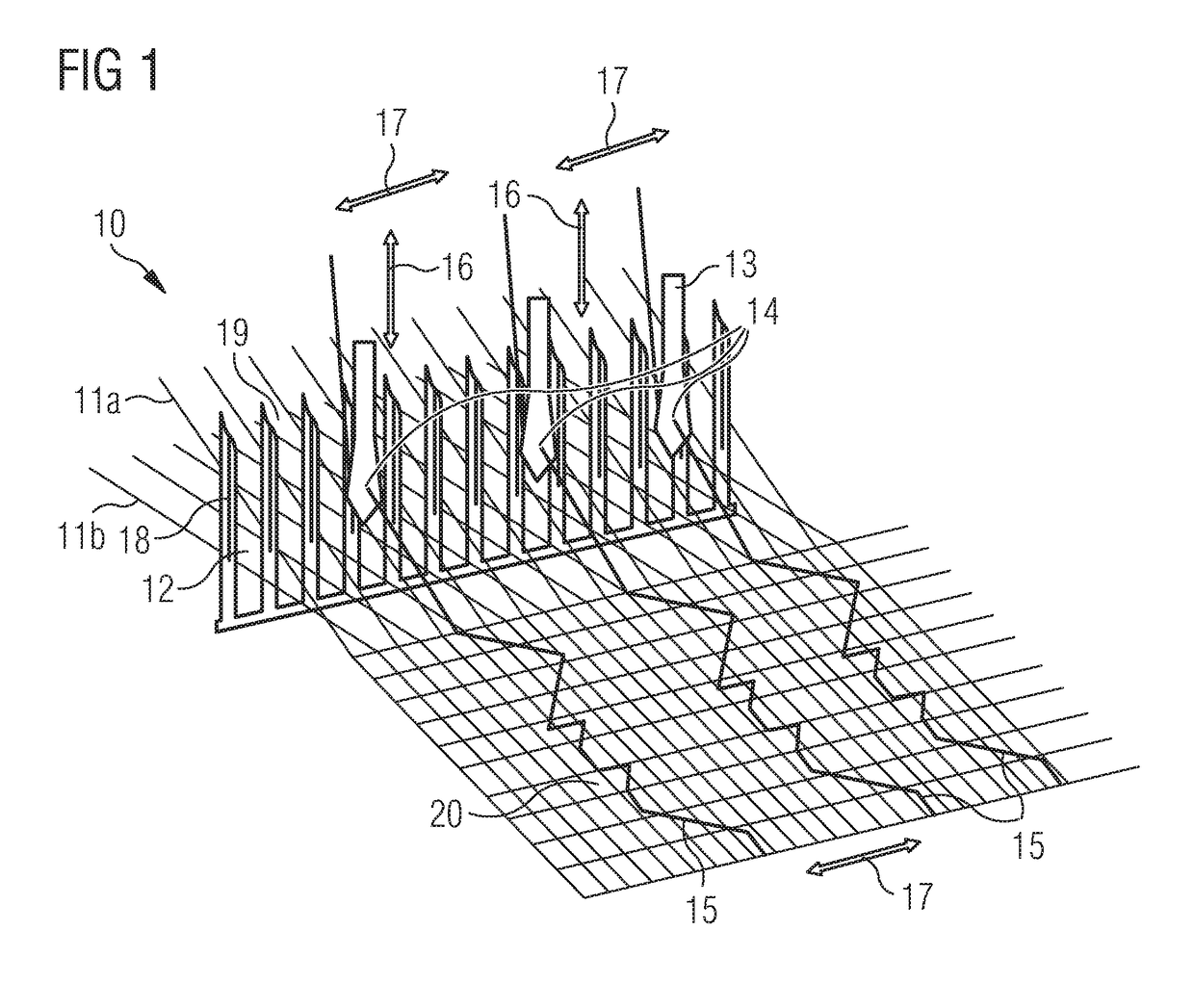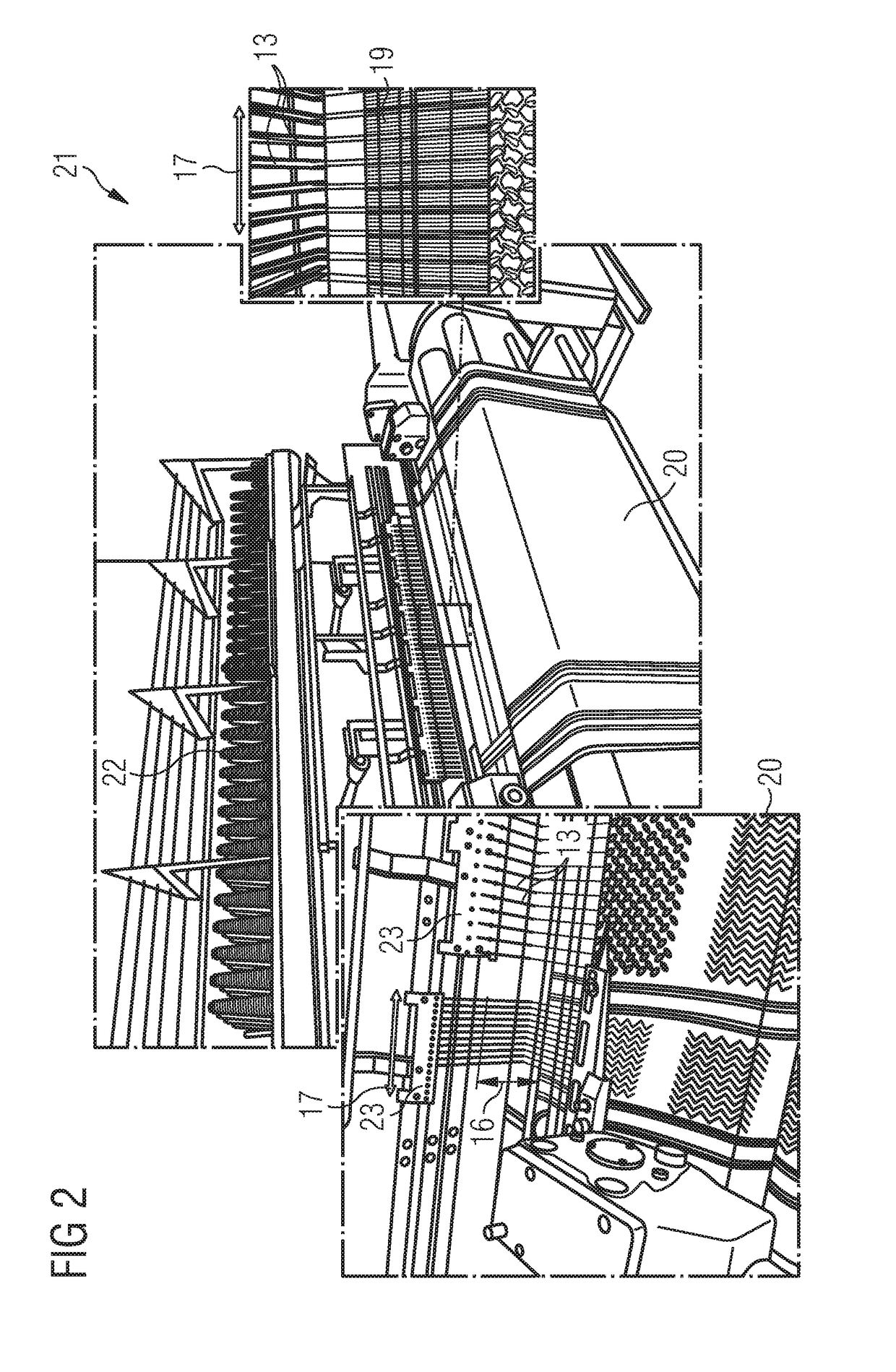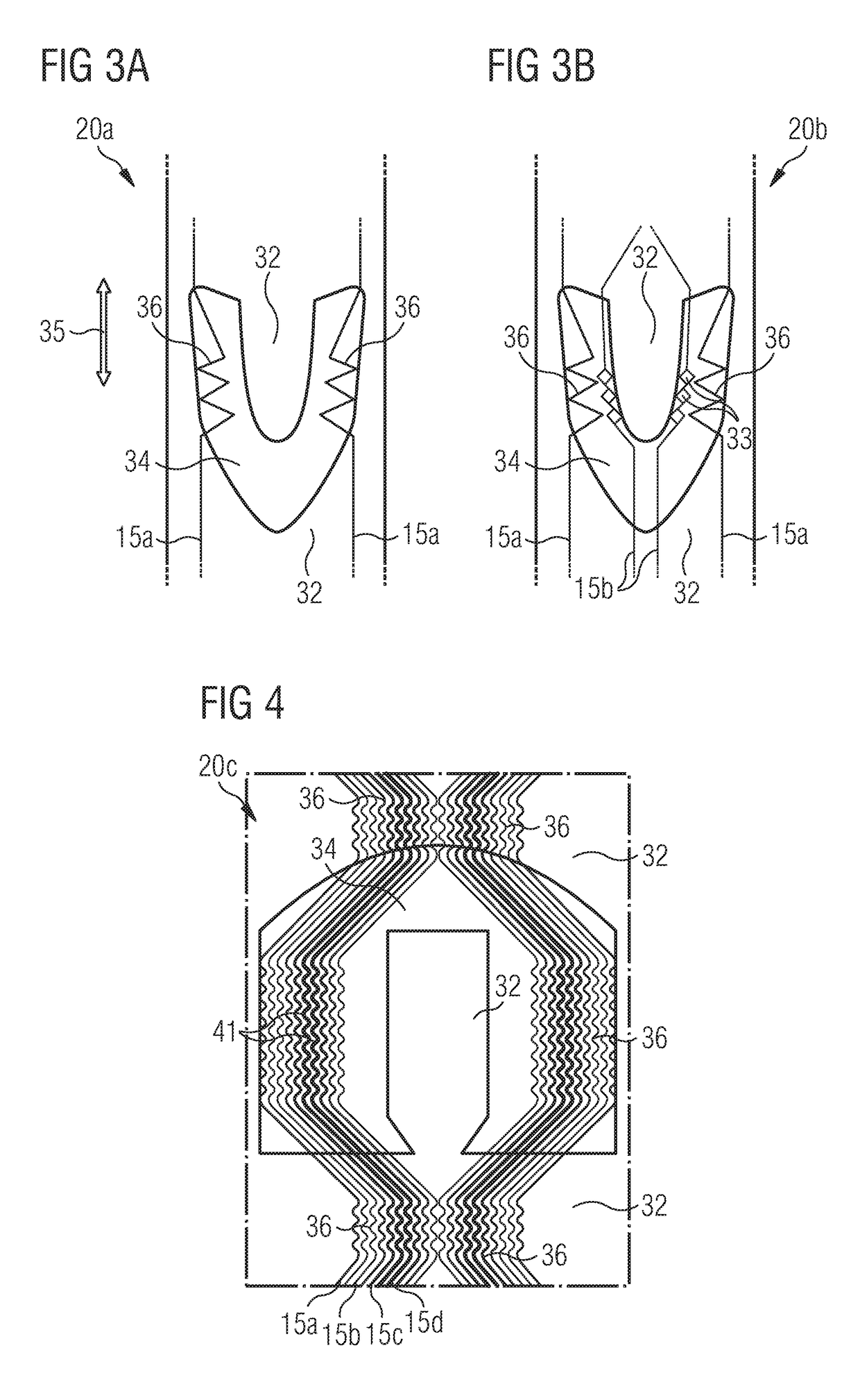Woven Shoe Upper
a technology of woven fabric and upper, which is applied in the field of shoe upper, can solve the problems of increasing the complexity and cost of the production process, increasing the cost of weaving, and reducing the average area weight of woven fabric, so as to improve the performance of the shoe upper, increase the average area weight of the fabric, and reduce the average area weight of the woven fabri
- Summary
- Abstract
- Description
- Claims
- Application Information
AI Technical Summary
Benefits of technology
Problems solved by technology
Method used
Image
Examples
Embodiment Construction
[0097]FIG. 1 shows an exemplary embodiment of a weaving apparatus 10 suitable for producing a woven sheet 20 from which a woven portion can be cut for a shoe upper according to a method of the present invention. A first set of warp yarns 11a is raised by a reed 18. An alignment mechanism 13 containing a needle eyelet 14 allows two stitching yarns 15 to be raised or lowered along a substantially vertical direction 16. The needle can enter and leave the open reed gaps 19 in the reed. When a weft (not shown in FIG. 1) is inserted at a weft insertion port the weaving apparatus 10 therefore allows simultaneous weaving of the weft and the warp yarns and stitching of the stitching yarns. It is evident to the person skilled in the art, that there could also only be a single alignment mechanism 13 providing a single stitching yarn 15, or there could be several alignment mechanisms arranged in a group containing several stitching yarns 15. The present invention merely requires that there is a...
PUM
| Property | Measurement | Unit |
|---|---|---|
| angle | aaaaa | aaaaa |
| angle | aaaaa | aaaaa |
| angle | aaaaa | aaaaa |
Abstract
Description
Claims
Application Information
 Login to View More
Login to View More - R&D
- Intellectual Property
- Life Sciences
- Materials
- Tech Scout
- Unparalleled Data Quality
- Higher Quality Content
- 60% Fewer Hallucinations
Browse by: Latest US Patents, China's latest patents, Technical Efficacy Thesaurus, Application Domain, Technology Topic, Popular Technical Reports.
© 2025 PatSnap. All rights reserved.Legal|Privacy policy|Modern Slavery Act Transparency Statement|Sitemap|About US| Contact US: help@patsnap.com



